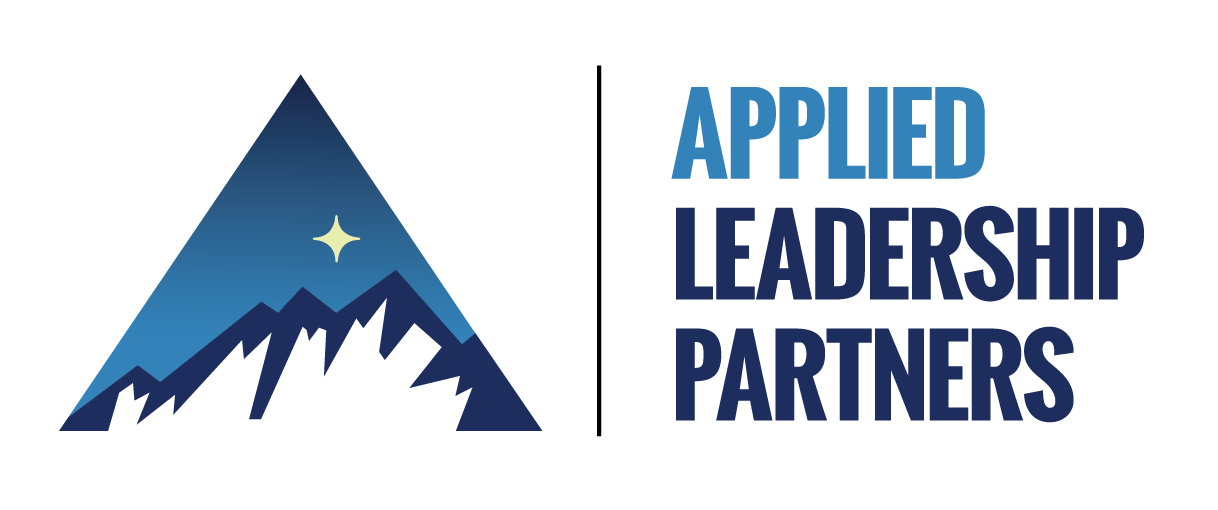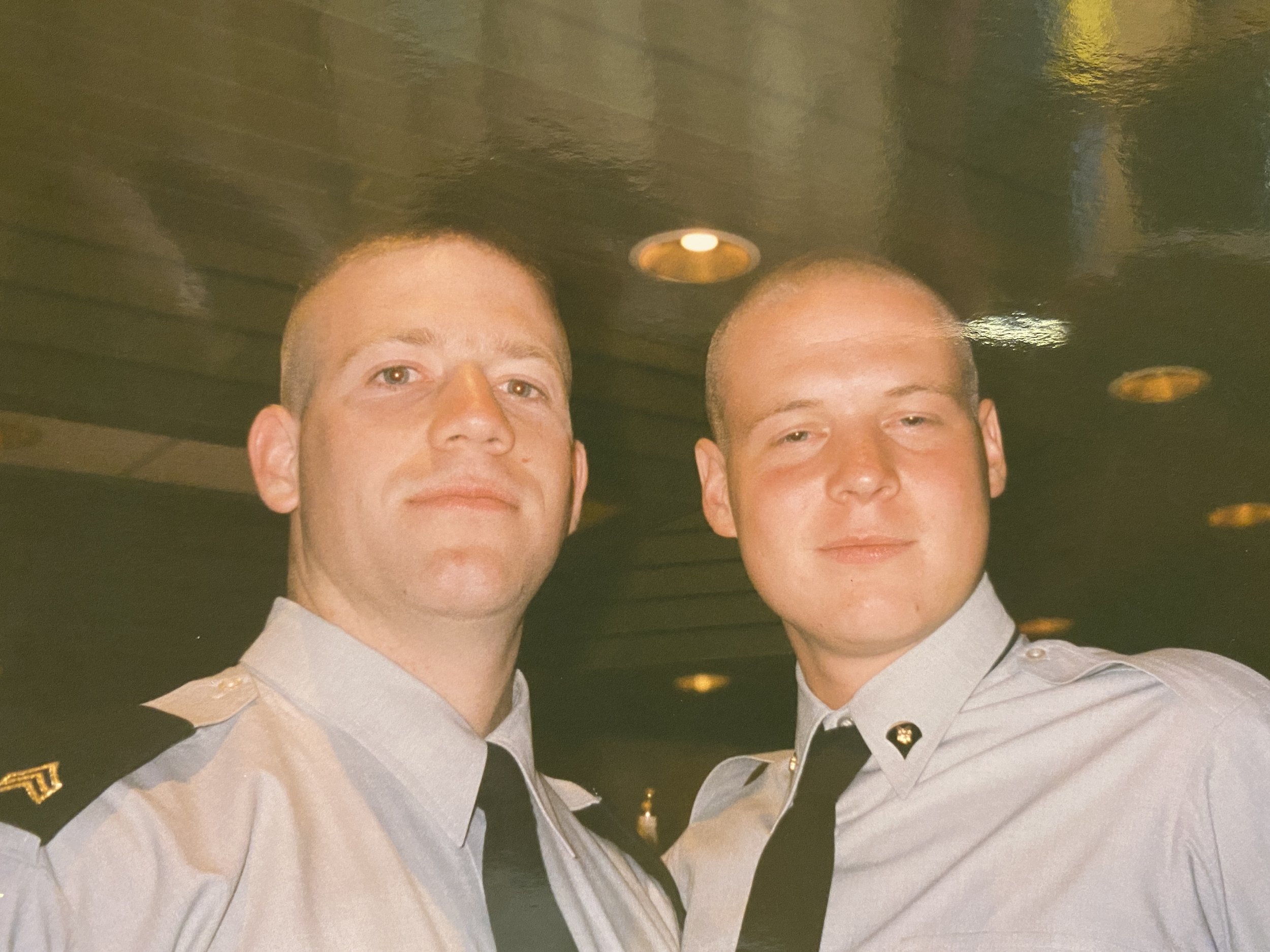Dear Friends,
This is the first of what we hope will be many annual letters from our family at Applied Leadership Partners. After almost a decade of trying to talk ourselves out of it, we finally decided to launch a leadership development business in January of 2020. Needless to say, it didn’t exactly go as planned, but as our lives have taught us over and over again - it never does.
We want to take a moment up front to acknowledge that 2020 was immensely difficult, even tragic, for millions of people.
This past year was one that none of us will ever forget, as much as some of us may like to. A global pandemic, economic crisis, civil unrest, and a tumultuous election season, created conditions that were as challenging and uncertain as any in recent history. In our own ways, we all struggled to wrap our heads (and hearts) around the experiences of 2020. There was plenty of frustration, and stress, and loss, and anger to go around. There’s no denying it. But if you looked closely, not at a TV or computer screen, but at the real world around you, there was also a tremendous amount of resilience, ingenuity, and love. We’ve been blessed to experience a lot of that.
We found so much of that love and resilience within our communities and with our partners by keeping a few simple themes in mind. These themes have come to represent the internal commitments that our family has made to our mission and the world we’ve been given. We hope to share a little of that with you here.
Bet on Ourselves. Walk in Faith.
We’ve always believed that all Big (capital B) problems are, at their core, leadership problems. So when we found ourselves talking about what we should do for the second half of our careers, the answer emerged pretty quickly. What do we love? What are we great at? What does the world actually need? Answer: Leadership. A few beers, a lot of prayer, three days in Tampa, and some strong coffees later, we were off to the races. We took a shot, but not a shot in the dark.
We put in the work up front. We had difficult conversations. We shared our concerns and our fears, along with our hopes and dreams. All relationships experience bumps and bruises along the way, and we certainly had ours after 11 years as friends and colleagues. But not all relationships grow stronger with time. Ours has. Through shared respect, care and purpose, we’ve chosen a commitment to each other, our families, and this mission. After a lot of conversation and time at the white board, this business finally became the thing that we just couldn’t unsee, couldn’t ‘not do’. So, we decided to bet on ourselves and walk in faith.
Be Generous. Respect the Moment.
After a couple months of working through hundreds of whiteboard sketches, Google docs, and website templates, we officially launched Applied Leadership Partners in mid-March. We had a few engagements lined up, our website went live, and we were off. And then the whole world shut down. In the blink of an eye, our business plan was out the window and it was unclear for how long. Our gigs were cancelled and amidst the crisis, nobody had the time or energy to talk to us about leadership development.
It soon became obvious that COVID-19 was going to be a major issue, indefinitely. And that left us wondering what the heck we were supposed to do. Some days, it felt like our new business might fail before it ever got started. But one thing was crystal clear: calm, competent leadership was needed more than ever. And while we couldn’t solve the world’s problems, we also couldn’t simply standby while so many of our friends and colleagues were fighting to save their businesses, and in some cases, their lives.
Truth be told, we found ourselves in a position very foreign to us: on the sidelines of a fight that mattered. But we also recognized that we had the ability to share some hard earned wisdom that was timeless and timely to the cultural moment.
So, we got busy doing what we could to help out. We started doing pro-bono work and offered a bunch of free whiteboard jam sessions to any leader that was wrestling with a difficult problem. In the process, we met so many awesome people (from high school teachers to innovation hub directors) and worked through some really important stuff. We had a blast doing it and it felt great to help leaders find a little clarity in the chaos.
We also took the pen. Together we authored 32 articles on our blog as well as in Coffee or Die Magazine, the GORUCK blog, and Thrive Global. We put original thought into the world, writing from our values, our lives, and our hearts. And we challenged each other to show up and be counted. Blayne dug deep, sharing “At Her Pace”, while Brandon did the same with “Daddy Was a Green Beret”, which made the Coffee or Die Magazine Top Stories of 2020. We also took a stand for loving others with our most read article of the year, “All Lives Matter is a Copout”. Some have asked us why we often don’t specify who the author (Blayne or Brandon) is on a given article. It’s because we write and edit almost everything together. Co-authorship is a part of who we are and how we do our best work. Our complimentary strengths make our ideas better and our words richer.
Settle In. Keep Walking.
The weather started to warm up in May and June, and so did our business. Slow, but steadily, the phone began to ring and the real work began. Leaders started to realize that life and business was not going back to normal and teams were beginning to fray at the edges. It was an honor, and incredibly exciting to be asked, “Can you come in and help us?”
By the end of 2020, we’d conducted 12 client engagements with organizations ranging from large corporations to nonprofits and local governments. We partnered with our clients to create 10 distinct leadership modules, built to fit the needs of their business and the times we’re living in. We worked together with patience and creativity to adapt our model and deliver highly relevant and effective experiences. We’re extremely proud of the products, and even more proud of the process. From keynote presentations to team alignment workshops to 1:1 coaching, every interaction was engaging and rewarding...and we’re not gonna lie, it’s been a ton of fun!
Through it all, we’ve been able to identify some common threads that present challenges for almost every organization. Here are a few of the prominent themes from our work from 2020.
Perseverance is Greater than Endurance
Endurance is admirable, and important, but endurance is not the same as perseverance. Endurance occurs when faced with difficult situations that test your training and resolve. Perseverance occurs when faced with adversity beyond your training that requires growth.
There are times when it makes sense to rely on our endurance; to simply put our heads down and grind it out. But the journey of leadership is really about navigating life’s unpredictable peaks and valleys, something we call the Ridgeline of Adversity. Doing so requires a choice, and it requires us to change.
Perseverance forces us to become the person the situation requires us to be. Perseverance is greater than endurance.
More (and Better) Conversations That Matter
Our most popular presentations and workshops were on the topic of “Difficult Conversations”, and for good reason. We’re sure that you’ve noticed that many of us are struggling with our collective willingness and ability to have difficult conversations. Additionally, we’ve seen the reality that adversity more often puts a microscope on pre-existing problems rather than creating new ones. Whether in our homes, our communities, or our places of work, we can all do better at leaning in to the discomfort of a hard or awkward conversation - and doing it with the intent to understand and emerge together. We’ve had the great pleasure of guiding teams through some of these and have provided them a solid framework to take into the future. Bottom line: if you’re a leader, this is where you really earn your salt. Whether you like it or not, it is your job to share difficult news, to really listen, and to chart a course forward, even if imperfect.
We also need to mention that we both spent considerable time this year focused on our most important roles: husband and father. We have amazing wives who are badasses across the board. And the work they do is incredibly important to our respective families and the world. Emergency room visits and terrorism didn’t take a pause for COVID-19, quite the opposite. So with Kelly as an ER nurse and Jeni as an intel professional, both of these ladies were very much at the office. We’ll be honest here, the business often took a back seat to cooking and dishes and laundry and homework. We’ve been acutely reminded that the work of raising a family is the hardest and most important work we’ll ever do.
And we can’t forget about the kids! Jaden Young began his service journey joining the Arizona National Guard and the ROTC program at Embry Riddle Aeronautical University in Prescott. On the high school front, Elli and Dylan navigated the challenges of an ever changing virtual school world, Dalton made great gains at the skatepark and little Penny became Daisy Joy’s (our family dog) favorite person in the world.
All of life came into close proximity for every one this year. With the quarantines, and homeschooling, and Zoom meetings, we were able to lean on (and share) some of the work that has been closest to our hearts over the past ten years - living a life in integration. Rather than trying to walk a tightrope to find “balance”, we focused on building sustainable and effective lives that include a blend of work, wellness, family, and fun. We’ve tried hard to make our lives less like a pie chart, with a bunch of separate compartments, and more like a pizza, with a nice blend of all the important ingredients. Some of our clients took the journey with us on this one, and we are so proud of the growth we have seen in them while conducting big missions that matter.
Our second most popular presentation this year about leading through uncertainty. Unknown distance ruck marches are used in the special operations community to build grit and resolve, a timely topic that resonated across the board. Settling in and tempering expectations is critical in these times. The ability to persevere through continuous hardship for however long it takes is a new competency for many leaders that we have been fortunate to share. It’s about learning to focus on the mission, not the moment.
As people, our ability to gracefully and earnestly navigate uncertainty couldn’t be more important, especially as we all ask ourselves and one another, “when will we get back to normal”? Normal is an illusion, and there is no going back, a truth that we also shared in our story about “Re-Deployment - Setting Expectations”. While the world received a crash course in this lesson, we found ourselves “re-certifying” these skills from prior life experiences. We generously shared our personal stories of struggling with reintegration, and the valuable lessons we learned. It’s been a blessing to guide others along this journey, and share the hard earned wisdom that we’ve accrued through a lot of losses and a lot of wins.
Moving Forward with Confidence
Like everyone else, we’ve already moved out on the ridge line that is 2021, confident in what we have learned and earned (in 2020). There are very few things to be certain about in life, but one thing we know at this point is that we are right where we are supposed to be - helping leaders become more effective and sustainable as they build tightly knit, high performing teams ready for the challenges ahead.
And we are confident. Confident that we will take more journeys alongside leaders that are ready to go, and ready to grow, as we navigate adversity, together.
We are ready. And so are you.
To all our friends who have bet on us this year, thank you! You have made our dream a reality and we are forever honored by your trust in us. To all the new friends in 2021 we are yet to meet, drop us a line and let us know how we can help you. Let’s get to it, together.
Here’s to 2021! We’ll see you on the trail.
Blayne and Brandon
























































